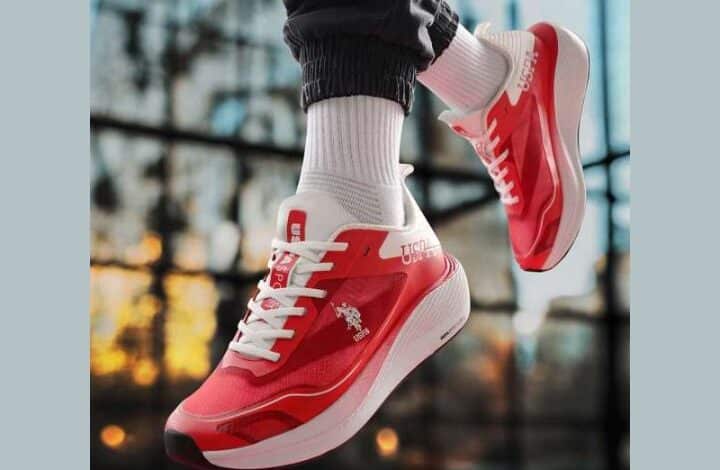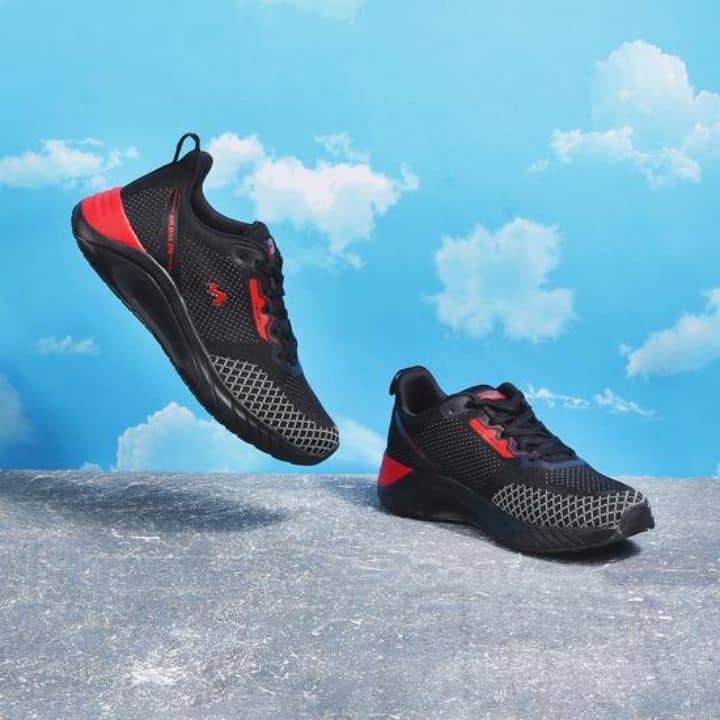
Sports shoes for men are more than just footwear; they are essential for anyone involved in physical activities, from casual joggers to professional athletes. The right pair of sports shoes can enhance performance, provide support, and ensure comfort during intense workouts or sports events. With so many options available on the market, choosing the right sports shoes for men can be overwhelming. However, understanding key factors such as shoe type, fit, and material can help you make an informed decision. In this article, we will explore everything you need to know about sports shoes for men, including tips on how to select the best pair, the various types of sports shoes, and the benefits they offer.
Why Are Sports Shoes for Men Important?
The importance of sports shoes for men cannot be overstated. Whether you’re running a marathon, hitting the gym, or playing basketball, the right pair of sports shoes can make a significant difference in your performance. Here’s why sports shoes are essential:
- Support and Stability: Proper sports shoes provide support to your feet and ankles, reducing the risk of injury during physical activities. They are designed to absorb shock, which helps in minimizing the strain on your joints.
- Comfort: Sports shoes for men are designed to offer maximum comfort. With features like cushioned insoles and breathable materials, they help prevent discomfort or blisters during extended wear.
- Performance: Certain sports shoes are engineered to enhance performance. For example, running shoes are optimized for speed, while basketball shoes are designed to improve agility and jump performance.
- Durability: Quality sports shoes for men are built to last, even with frequent use. They are made from materials that are durable enough to withstand rigorous physical activities.
Different Types of Sports Shoes for Men
When looking for sports shoes for men, it’s important to know that different sports require different shoe types. Here are the most popular categories of sports shoes for men:
1. Running Shoes
Running shoes are perhaps the most common type of sports shoes for men. . They often feature gel, foam, or air cushioning in the sole to absorb impact during running. Key features of running shoes include:
- Cushioning for Impact: Running involves repeated impact, so good cushioning is essential.
- Breathable Mesh Uppers: These materials help to keep your feet cool and dry.
- Flexible Soles: Running shoes often have flexible soles that promote natural foot movement.
2. Basketball Shoes
They usually have a high-top design to support the ankle and a thick, cushioned sole to absorb the force from jumps. Key features of basketball shoes include:
- High-Top Design: This provides extra support for the ankle during lateral movements.
- Grip and Traction: Basketball shoes are equipped with special rubber outsoles to offer superior traction on the court.
- Shock Absorption: The cushioned sole helps to reduce the impact of jumping and running on hard surfaces.

3. Training Shoes
Training shoes are versatile shoes designed for a wide range of gym exercises, including weightlifting, running, and HIIT. Key features of training shoes include:
- Firm, Stable Sole: Training shoes often have a flat, stable sole that provides good support during weightlifting.
- Breathability: Mesh uppers ensure that your feet stay cool and dry.
- Versatility: These shoes are designed to handle a variety of workouts, from cardio to strength training.
4. Tennis Shoes
They feature a durable sole, often with extra grip for traction on court surfaces. Key features of tennis shoes include:
- Lateral Support: Tennis shoes are built to support side-to-side movements.
- Durable Outsoles: The outsoles of tennis shoes are designed to handle the wear and tear of playing on hard or clay courts.
- Cushioning for Quick Movements: Tennis shoes often include cushioning to provide comfort during long hours on the court.
5. Football Shoes (Soccer Cleats)
Football shoes, or soccer cleats, are designed to provide traction and support for players on grassy or turf fields. They feature studs on the soles for better grip during running and turning. Key features of football shoes include:
- Studs for Traction: The studs on the outsole provide traction on grass or turf, preventing slips during quick directional changes.
- Lightweight Design: Football shoes are usually lightweight to ensure maximum speed on the field.
- Durability: These shoes are built to withstand the rigors of playing on outdoor fields.
How to Choose the Right Sports Shoes for Men
When selecting sports shoes for men, it’s essential to consider several factors to ensure that you’re making the best choice for your specific needs. Most importants factor to consider:
1. Foot Type and Arch Support
Different feet require different types of support. For example:
- Flat Feet: If you have flat feet, look for shoes with motion control and arch support.
- High Arches: If you have high arches, opt for shoes with extra cushioning to absorb impact.
2. Fit and Size
The fit of your sports shoes is crucial for both comfort and performance. A good fit will prevent blisters, calluses, or other foot injuries. Key tips for a proper fit include:
- Make sure there’s about a thumb’s width of space between your toes and the front of the shoe.
- Your heel should fit snugly, with no slipping when you walk or run.
- Choose shoes that offer adequate arch support, especially for high-impact sports.
3. Purpose and Activity
Consider the activity you will be doing most often. For gym workouts, training shoes with a firm sole might be the best option. Be sure to match the shoe type to the activity to maximize comfort and performance.
4. Durability and Material
Sports shoes for men come in a variety of materials, from leather to synthetic fabrics to mesh. Choose a material that is durable, breathable, and comfortable for the activity you’re engaging in. For example, mesh uppers are great for breathability, while leather provides more durability and support.
5. Weight and Flexibility
Consider the weight of the shoes, especially if you plan on wearing them for extended periods. Lighter shoes are typically better for running or high-intensity activities, while heavier shoes with more cushioning are ideal for activities that involve a lot of lateral movement, such as basketball or tennis.
Benefits of Wearing Sports Shoes for Men
Wearing the right sports shoes for men comes with several key benefits that go beyond performance:
- Injury Prevention: Properly fitted sports shoes with the right support can reduce the risk of injuries like sprains, strains, and blisters.
- Enhanced Foot Health: The right pair of sports shoes helps maintain good posture and foot health by supporting the natural alignment of the feet and body.
Final Thought of Sports Shoes For Men
In conclusion, sports shoes for men are more than just a necessity—they are an investment in your health and performance. Whether you’re running a marathon, playing basketball, or hitting the gym, the right pair of sports shoes can provide the support, comfort, and durability you need to perform at your best. When choosing sports shoes, consider factors such as your foot type, the type of sport you’re engaging in, and the shoe’s material and fit. By making an informed decision, you can ensure that you’re wearing the best sports shoes for your needs, helping you stay active, injury-free, and comfortable.
By choosing the right sports shoes for men, you not only ensure a better experience during physical activity but also help protect your long-term foot health and overall well-being.




